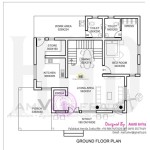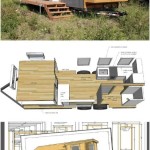Essential Aspects of Designing Your Own House Plans
Embarking on the journey of designing your own house plans is an exciting and fulfilling endeavor that offers immense creative freedom. However, it's crucial to approach the process with a comprehensive understanding of key aspects to ensure a successful outcome. Here are some essential considerations to guide your design journey:
1. Determine Your Needs and Preferences
The foundation of any house plan lies in understanding your specific needs, preferences, and lifestyle. Consider the number of bedrooms and bathrooms required, desired living spaces, and any amenities or features that enhance your daily life. Defining these parameters will provide a clear framework for the design process.
2. Research and Gather Inspiration
Explore existing house plans and architectural styles to gather inspiration and identify elements that resonate with you. Visit open houses, study home magazines, and consult with architects or interior designers to broaden your perspective and refine your design vision.
3. Consider Site and Environmental Factors
The location and surroundings of your home play a significant role in the design. Assess the site's topography, orientation, and access to natural light. Consider the impact of local climate and environmental regulations on the design and construction process.
4. Plan for Functionality and Flow
Strive for a seamless flow between rooms and spaces. Design a layout that maximizes natural light, caters to your daily routines, and ensures efficient use of space. Consider traffic patterns, room adjacencies, and the placement of windows and doors to enhance functionality and comfort.
5. Pay Attention to Building Codes and Regulations
Before finalizing your plans, ensure compliance with all applicable building codes and regulations. These may include requirements for accessibility, fire safety, structural integrity, and energy efficiency. Consult with local authorities and professionals to confirm that your design meets the necessary standards.
6. Select Appropriate Materials and Finishes
The choice of materials and finishes can significantly impact the aesthetics, durability, and cost of your home. Consider the climate, maintenance requirements, and your personal style when selecting materials for roofing, siding, windows, flooring, and other elements.
7. Seek Professional Assistance When Needed
While it's possible to design your own house plans, it's advisable to seek professional guidance if you encounter technical challenges or require specialized expertise. An architect or structural engineer can provide valuable insights, ensure structural integrity, and assist with complex design requirements.
Conclusion
Designing your own house plans can be a rewarding experience, empowering you to create a home that truly reflects your aspirations and lifestyle. By carefully considering the essential aspects discussed above, you can embark on this journey with confidence and ensure a successful outcome. Remember, it's a collaborative process that involves a balance of creativity, functionality, and adherence to regulations. Embrace the challenge and enjoy every step towards realizing your dream home.

Design Your Own Home House Designing Homes

Make Your Own Blueprint How To Draw Floor Plans

House Plans How To Design Your Home Plan

Floor Plan Creator And Designer Free Easy App

Make Your Own Floor Plans

House Plans How To Design Your Home Plan

Where You Can Buy House Plans Live Home 3d

Make Your Own Blueprint How To Draw Floor Plans

House Plans And Design

House Plans How To Design Your Home Plan








